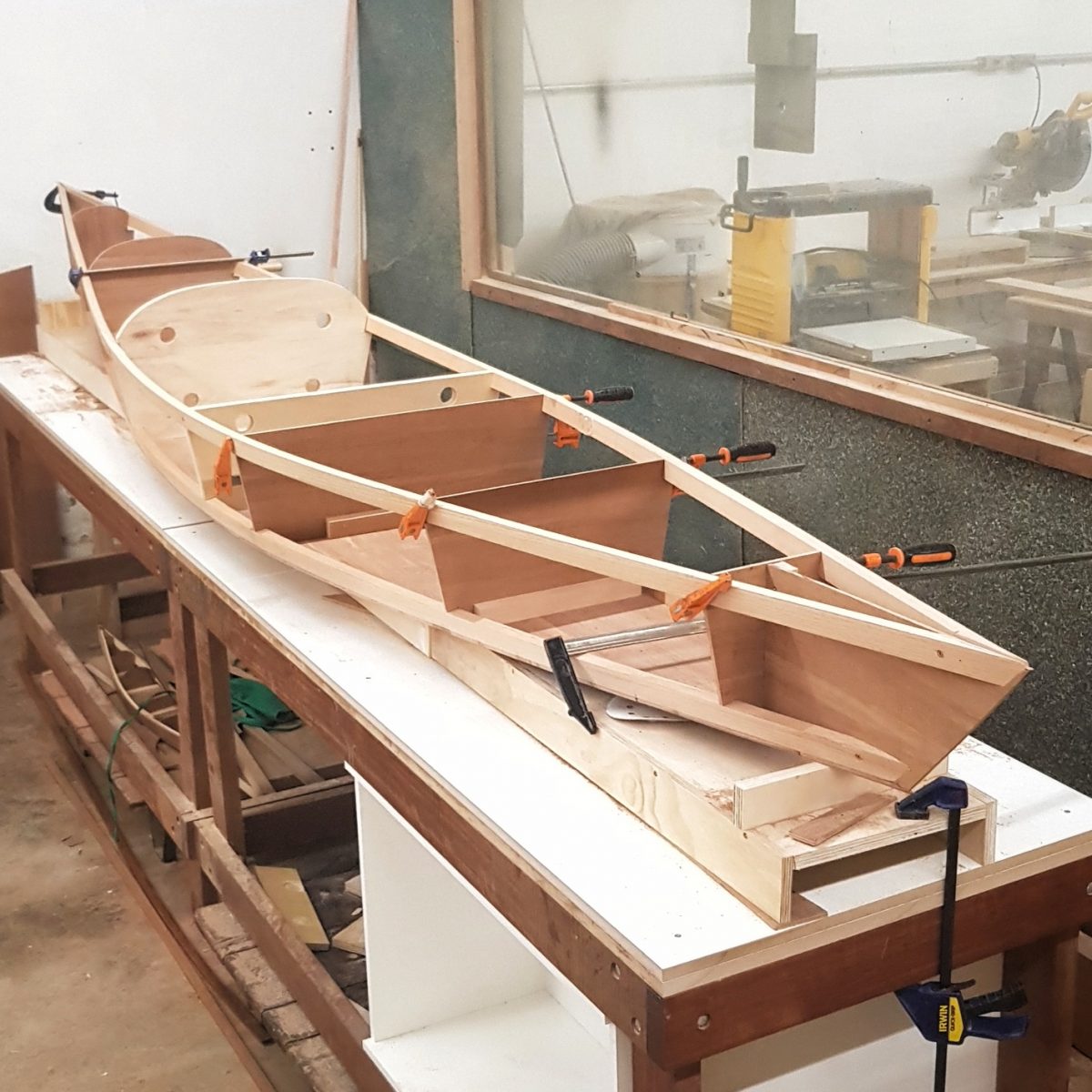
Wooden Kayak Plans: Crafting a Canoe-Kayak Hybrid
The allure of building your own wooden kayak is undeniable. It's a journey that combines craftsmanship, patience, and a deep connection with nature. While the traditional kayak design reigns supreme, the appeal of a canoe-kayak hybrid beckons, promising the best of both worlds. This article will guide you through the exciting process of building a wooden kayak with a captivating canoe-kayak hybrid design, emphasizing the nuances and joys of this unique project.
Choosing the Right Plans
The first step in this adventure is to find the perfect set of wooden kayak plans. Search online for "canoe-kayak hybrid plans," "wooden kayak plans," or "wood kayak designs." Look for plans that resonate with your desired features, such as length, width, and seating arrangement. Consider the following factors:
Length and Width
The length and width determine the kayak's stability and speed. A longer and narrower design generally offers greater speed, while a shorter and wider design provides more stability. For a canoe-kayak hybrid, aim for a length that allows for comfortable paddling while retaining the maneuverability of a kayak.
Seating Arrangement
Decide on your desired seating arrangement. A traditional kayak typically features a single seat, while a canoe-kayak hybrid might include multiple seats or even a bench for tandem paddling. Think about how you envision using the kayak and how many people you want to accommodate.
Construction Style
Wooden kayak plans can be found in different construction styles, each with its own challenges and rewards. Some common styles include:
- Strip-built: This method involves attaching thin strips of wood to a frame, creating a strong and lightweight hull.
- Plank-on-frame: This traditional technique uses wider planks that are joined and shaped to form the hull.
- Stitch-and-glue: This method utilizes thin plywood sheets that are stitched together and then glued, offering a faster and easier construction process.
Choose the construction style that aligns with your skills and resources. For a beginner, stitch-and-glue might be a good starting point. For experienced woodworkers, the challenge of a strip-built or plank-on-frame project could be more appealing.
Gathering the Materials
Once you have your plans in hand, gather the necessary materials. This includes:
- Wood: The choice of wood depends on your preference and the construction style. Popular options include cedar, spruce, pine, and mahogany. Consider the wood's durability, weight, and aesthetic appeal.
- Epoxy Resin and Hardener: These are essential for bonding the wood and creating a waterproof seal.
- Fiberglass Cloth and Resin: Fiberglass is used to reinforce the hull, making it durable and resistant to impact.
- Fasteners: Choose screws, nails, or other fasteners that are suitable for your wood and construction method.
- Tools: You'll need a variety of tools, including saws, planes, chisels, clamps, sandpaper, and a drill.
Before beginning construction, ensure you have a dedicated workspace with sufficient ventilation, as working with epoxy and resin can be hazardous.
Building the Hull
Now comes the exciting part â€" building the hull. Carefully follow your chosen plans, taking your time and paying attention to detail. Each step, from cutting the wood to shaping the planks, requires precision and accuracy.
Here are some tips for building a durable and aesthetically pleasing hull:
- Use sharp tools: A sharp saw and chisel will ensure clean cuts and prevent wood splitting.
- Sand thoroughly: Sanding the wood smoothly before applying epoxy will create a stronger bond.
- Be patient with epoxy: Allow epoxy to cure completely before moving on to the next step. Refer to the epoxy manufacturer's instructions for curing times.
- Use fiberglass for reinforcement: Applying fiberglass cloth to the hull will add strength and durability.
Building the hull is a labor of love. Take pride in each step, knowing you are crafting a unique and beautiful piece of watercraft.
Adding Features
Once the hull is complete, it's time to add the finishing touches. This includes features such as:
- Decks: Construct the decks according to your plans, ensuring they are secure and properly fitted.
- Seats: Craft comfortable and ergonomically sound seats. You might consider adding adjustable seating for a personalized experience.
- Cockpit: Create a functional and spacious cockpit, taking into account the placement of seats, footrests, and other essential components.
- Bulkheads: Bulkheads are important for watertight compartments, enhancing safety and buoyancy.
Remember to use your creativity and personalize these features. Consider incorporating unique elements, such as handcrafted wood accents or elegant detailing.
Finishing Touches
The final step is to add the finishing touches. This might include:
- Painting or varnishing: Protect the wood from the elements and enhance its appearance with a durable paint or varnish.
- Adding hardware: Install essential hardware, such as oarlocks, deck cleats, and hatches.
- Creating a personalized design: Incorporate your own creative touches, whether it's a distinctive color scheme, artistic decals, or handcrafted wood accents.
Take your time with the finishing touches, as they add the final flourish to your wooden canoe-kayak hybrid. Enjoy the process and create a truly unique and personalized watercraft.
Sailing into Adventure
The moment you launch your handcrafted wooden canoe-kayak hybrid into the water is a moment of immense satisfaction. The culmination of your hard work and dedication now takes shape, ready to carry you on countless adventures.
As you glide through the water, you'll appreciate the craftsmanship, the beauty, and the sense of connection with nature. Remember, your wooden kayak is not just a vessel; it's a testament to your skills, creativity, and the joy of building something extraordinary with your own hands.
Embrace the adventure, explore new waters, and cherish the countless memories you'll create in your handcrafted wooden canoe-kayak hybrid.
0 评论:
发表评论
注意:只有此博客的成员才能发布评论。